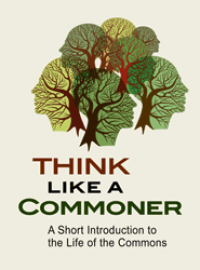In a scary/serious display of commodity fetishism that even Karl Marx would have thought extreme, property rights are now being handed out for colors. I know, it sounds crazy, but, gosh, it’s darn difficult to say no to the mad, totalizing logic of the market. [inline:1] The U.S. Patent and Trademark Office had been fairly cautious in granting color trademarks. But the floodgates were opened in 1995 when the U.S. Supreme Court allowed the Qualitex Co. to own a distinctive shade of green-gold for its press pads (see above). The case has been controversial because it declared that a trademark could consist of a color “pure and simple” without regard for other components of a trademark (such as the shape, texture and other features).
But now Germany is forging ahead of the United States in the race to own colors. The German Patent and Trademark Office has recognized 20 colors as private property. Applications to lock up additional colors are now pending. This news comes from Markenbusiness, “the magazine for trademark owners.” Some examples: Deutsch Telekom AG now owns the color magenta, which has been estimated to be worth up to 20 billion Euros. The maker of Milka chocolate owns the color lilac, which was made famous by its trademarked Milka cow. The color-trademark is estimated to be worth about 50 million euros.
What started this trend to own colors in Germany? Markenbusiness explains: “In June 2004, the European Court of Justice decided the question of whether colors can be a way of differentiating producers as well as whether they can be portrayed graphically. The answer was couched in typical legal language: Yes, but it depends upon the individual case. Colors are available for everyone, the layman might think. Yet a color-trademark leads to a color monopoly.” [inline:2]
A color monopoly can be claimed if the color acquires a “secondary meaning” that identifies and distinguishes a product or company from others. The Milka cow is so associated with lilac that when 40,000 Bavarian children participated in a competition to color a picture of a cow, one third of them chose to use the color lilac.
So here are my predictions for the brave new global market for colors. Unfair competition complaints will be filed at the World Trade Organization after a Bulgarian insurance company dares to use the color putty, owned by UPS. Economists will issue sophisticated studies showing that the sky is actually diluting the value of IBM’s trademark (“Big Blue”). Eberhard erasers and the Flamingo Hotel will litigate to control pink. And the American Color cartel – “We Decorate Your Life” – will corner the market on tropical coral, azure blue and deep pink, and license them to Jamaica to use on its tourist souvenirs. The wealth-creating potential of the market is truly amazing.











Recent comments